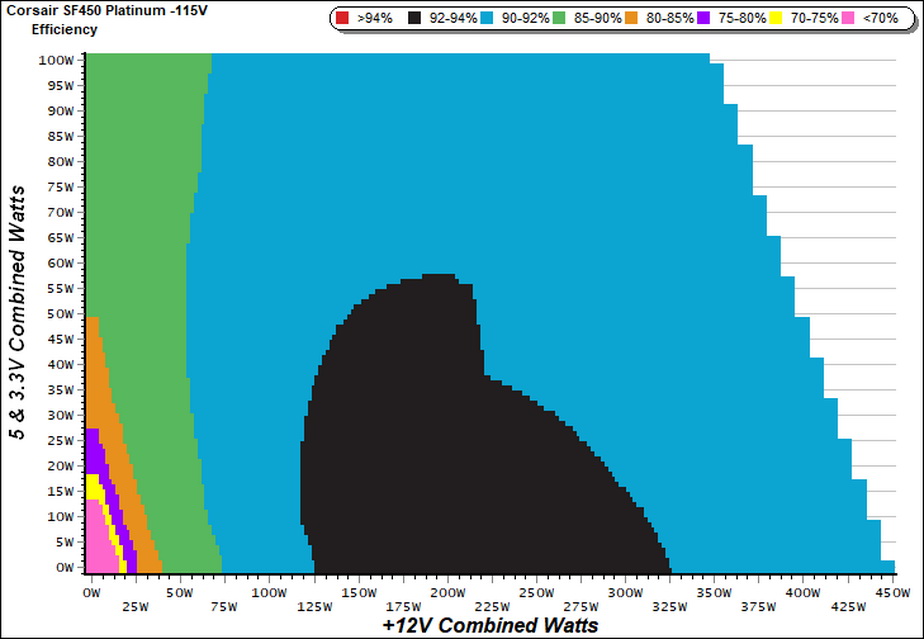Corsair SF450 Platinum SFX PSU Review: Best of the Best
Why you can trust Tom's Hardware
Cross-Load Tests and Infrared Images
Our cross-load tests are described in detail here.
To generate the following charts, we set our loaders to auto mode through our custom-made software before trying more than 25,000 possible load combinations with the +12V, 5V, and 3.3V rails. The load regulation deviations in each of the charts below are calculated by taking the nominal values of the rails (12V, 5V, and 3.3V) as point zero. The ambient temperature is between at 30°C (86°F) to 32°C (89.6°F).
Load Regulation Charts
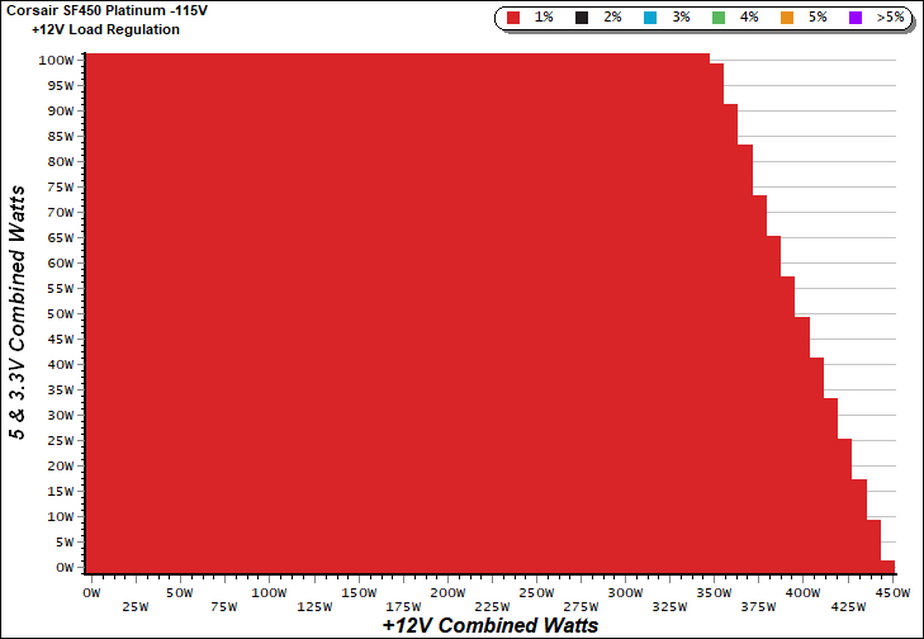

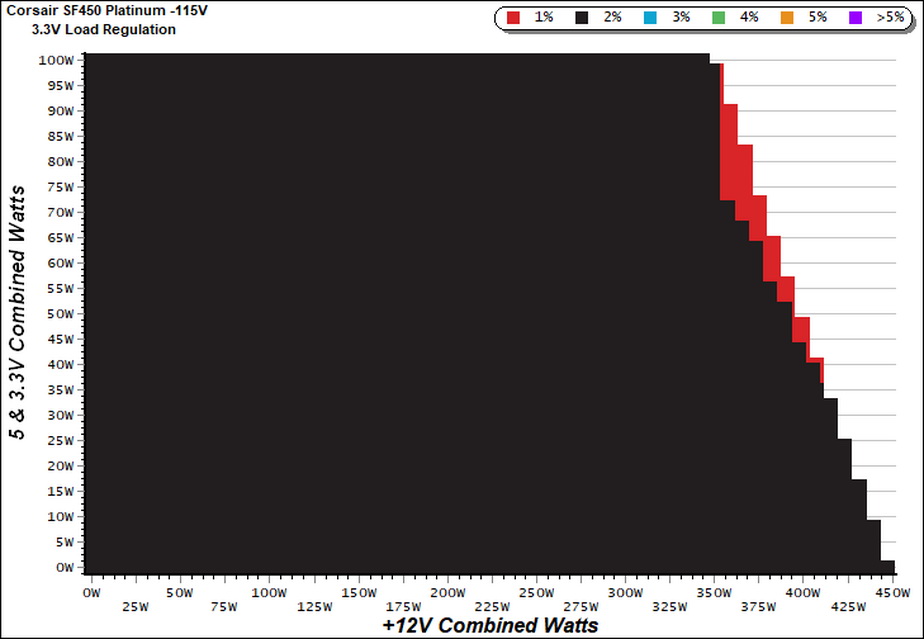
Efficiency Chart
There's a big chunk of this chart where the SF450 Platinum delivers more than 92% efficiency. It would be nice to see over 94% efficiency as well, even for a short period.
Ripple Charts
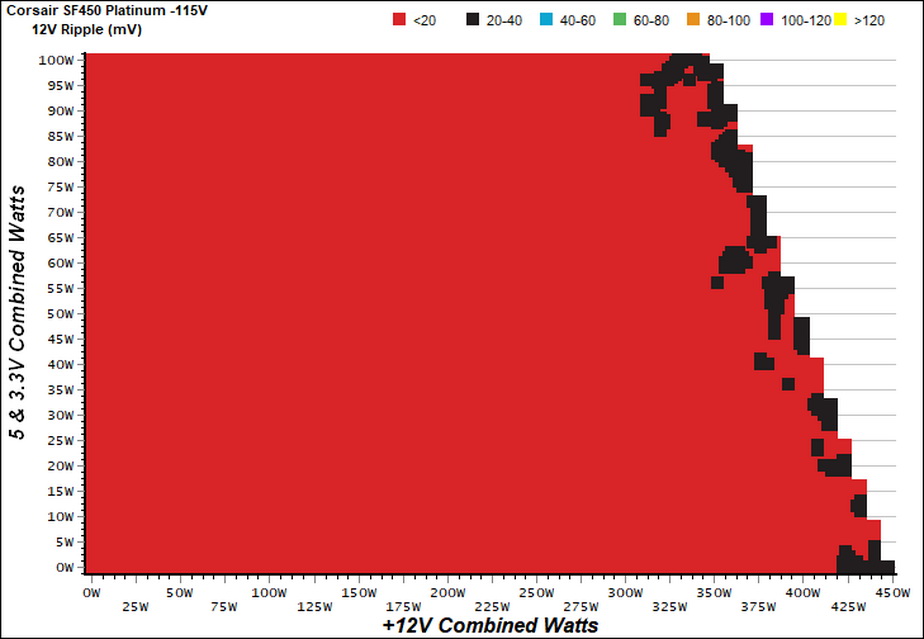



Infrared Images
We apply half-load for 10 minutes with the PSU's top cover and cooling fan removed before taking photos with our modified FLIR E4 camera that delivers 320x240 IR resolution (76,800 pixels).
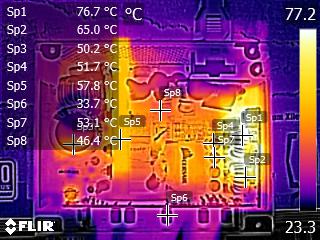



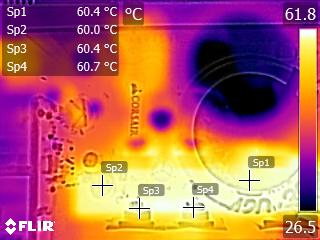

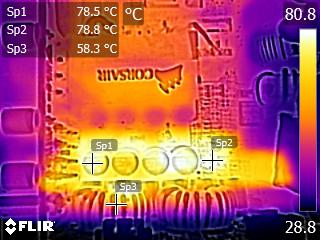
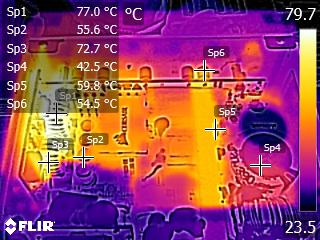
As usual, the highest temperatures are measured on the VRMs responsible for generating the minor rails. The bulk cap doesn't get too hot. But the same can't be said for the array of caps near the VRMs. Because they're polymer caps, though, that shouldn't be an issue under real-world conditions. If they were electrolytics, we wouldn't be as confident about their reliability.
MORE: Best Power Supplies
MORE: How We Test Power Supplies
Get Tom's Hardware's best news and in-depth reviews, straight to your inbox.
MORE: All Power Supply Content
Current page: Cross-Load Tests and Infrared Images
Prev Page Protection Features and DC Power Sequencing Next Page Transient Response Tests
Aris Mpitziopoulos is a contributing editor at Tom's Hardware, covering PSUs.
